If you’ve ever invested in SEO then you’ve probably evaluated your website’s organic search rankings as a Key Performance Indicator (KPI). Typically, the goal is to improve your rankings for a group of keywords, and ultimately obtain that #1 spot.
Ranking #1 for a popular keyword is great, but what does that tell you about your bottom line Return-on-Investment (ROI)? Nothing.
Organic rankings help your practice achieve better visibility online, and this visibility is the first step in the patient acquisition process. However, it’s one of many tactics for gaining visibility. You can also pay Google to run ads and gain similar visibility. Regardless of your approach, this is just the first step in acquiring new patients.
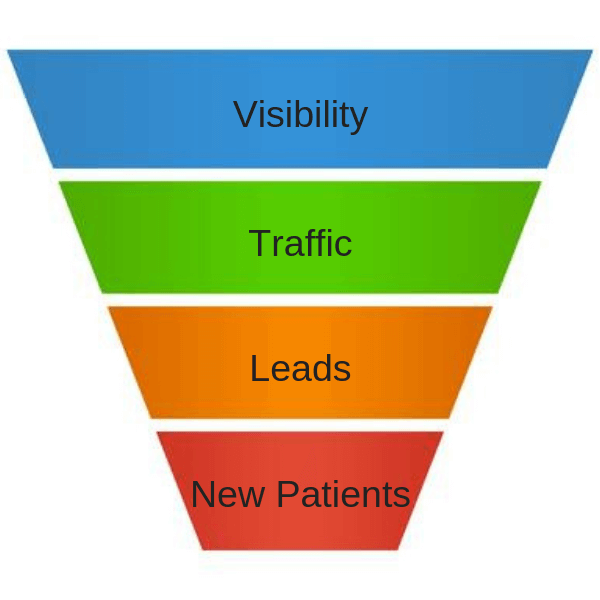
The next step is to turn that visibility into traffic, and ultimately, convert that traffic into leads. From there you can effectively track ROI, but it’s impossible to do so if you’re not looking at the entire funnel.
If earning top rankings help with visibility then why shouldn’t I try to be #1?
This is a common question I get from clients, and my answer is simple: the goal should always be to improve organic visibility, but we cannot account for every single keyword that’s driving traffic to the website. If you run ranking reports with a software, such as SEMRush, then you likely have a select group of 25-100 keywords you’re monitoring, with a group of 5-10 procedures you’re hyper-focused on. It doesn’t matter if you run a plastic surgery center, med spa, or dermatology practice, this is a very small percentage of the total number of searches driving traffic to your website.
All you have to do is run a Google Ad campaign and evaluate all the different search terms used to trigger your ad and drive traffic to your website. You’ll almost assuredly see a combination or short queries and long-tail keywords. These long-tail keywords are the life-blood of any modern SEO strategy because there are almost limitless possibilities.
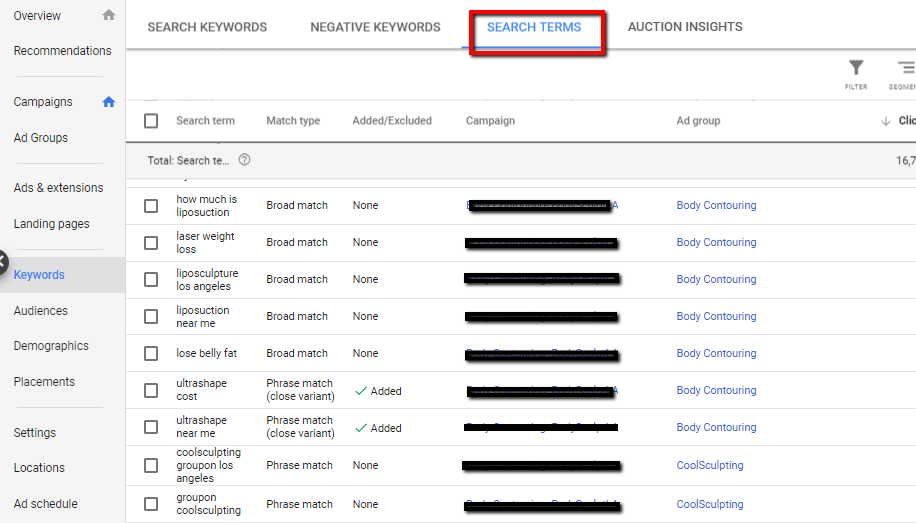
Focus on the long-tail with content marketing
If you’re focused on SEO or investing in it at all then you’re likely aware of content marketing. If not, then you need to re-evaluate your approach. Content marketing is a digital marketing tactic that involves creating, publishing, and distributing content to your target market.
The central component of your content marketing strategy should be blogging because it’s the easiest but most effective way to obtain rankings, drive traffic, and generate leads. Check out our five tips for producing effective blog article here.
All you have to do is look at your Google Analytics landing page data to see how much additional traffic your blogs are generating each month. In most cases, the blogs individually only add a small percentage of traffic to the website, but cumulatively they can add up to a significant amount of traffic.
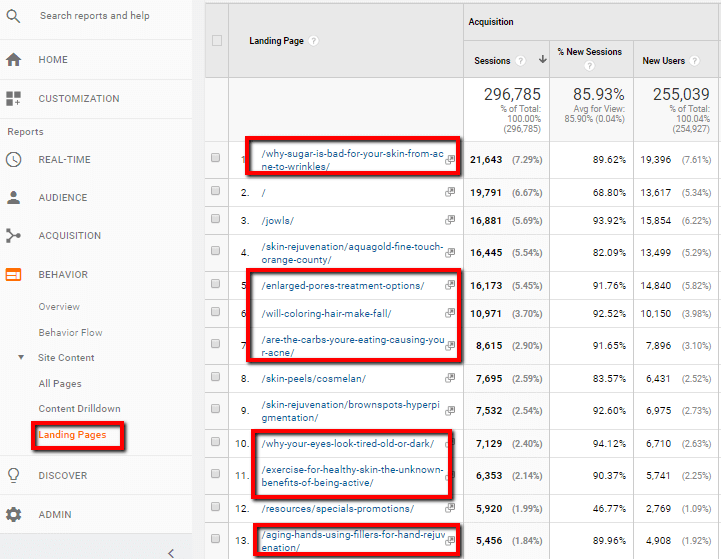
Other factors to consider when working on improving your rankings
1- Your top organic ranking may still be below 3+ paid ads and Google local map results: The effectiveness of being #1 is significantly reduced when you have 6-7 other listings above you.
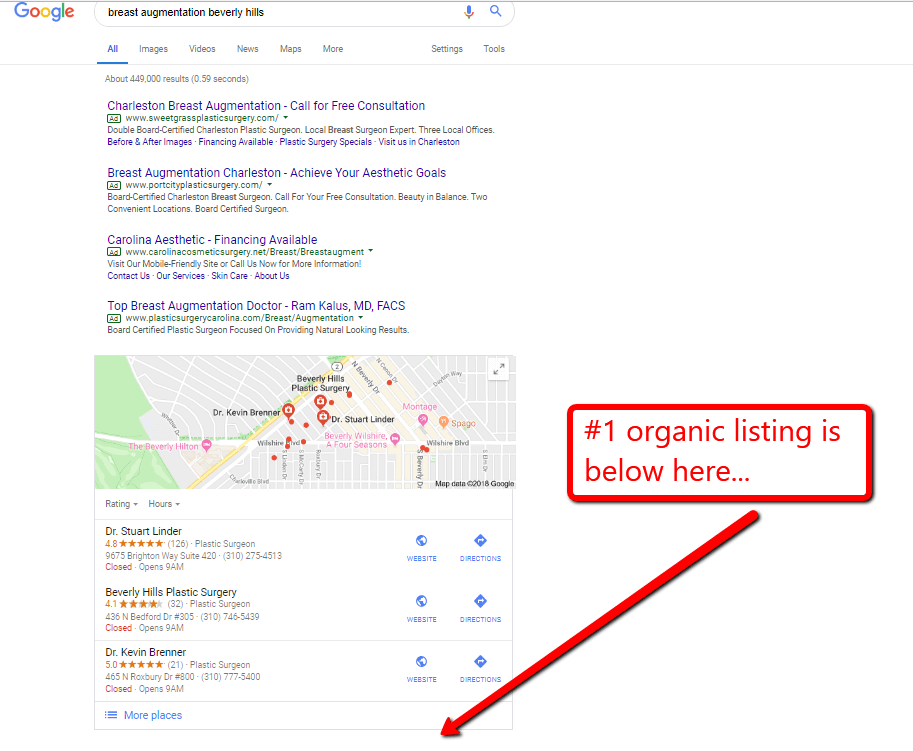
2- If you’ve correctly implemented structured data then your organic listing can stand out more: You might not be #1, but if you’re in the top half of page 1 and you have the review schema implemented and showing with your search listing then you’re much more likely to drive clicks. Look at how much more the listing stands out:
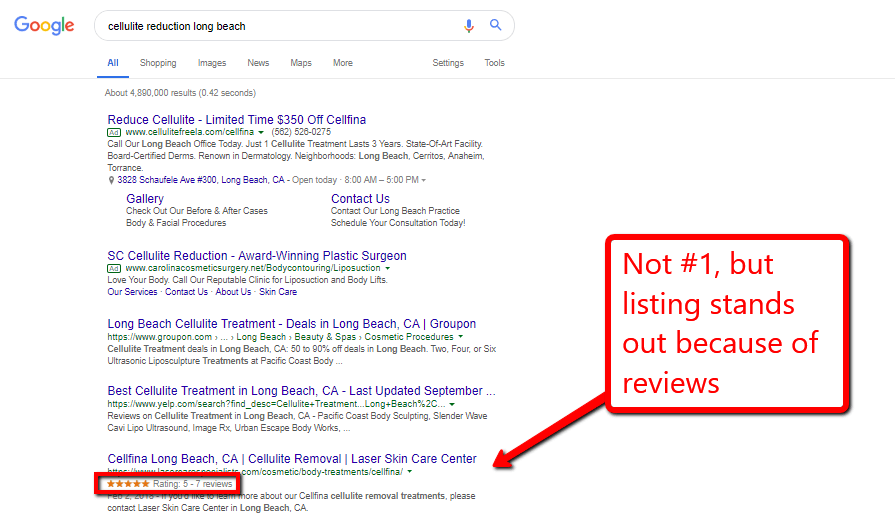
3- You might already be ranking #1 but not getting and traffic: Assuming you’re tracking this correctly, this could be a sign of less search volume than you thought. Or, your metadata might be flawed. Your title tag and meta description that’s showing might need to be fine-tuned.
4- Awareness of prospective patient based on their search query: We’ve noticed trends that longer, more specific search queries typically align with a prospect who is further along in the sales cycle. They’re often solution aware, if not product aware, which results in more qualified leads.
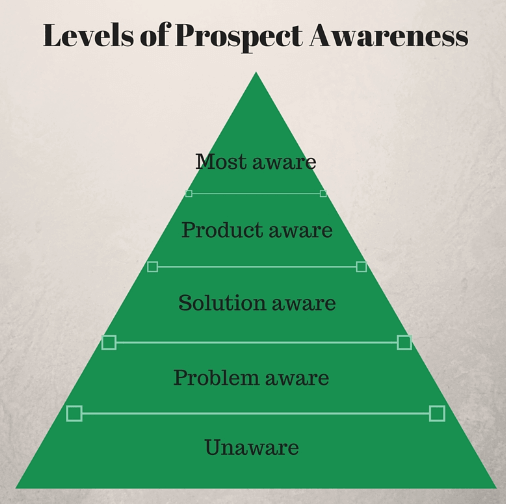
So how should I effectively evaluate my SEO?
First, think about your goals or your KPIs. The goal of any SEO campaign should never be to simply obtain high organic search rankings. The goal should be to increase visibility to increase organic traffic, and that traffic should result in more leads. If you’re increasing traffic but not leads then you have a conversion problem with your website. That’s a separate issue entirely.
In my ten years of working in digital marketing with aesthetic practices I’ve never seen an instance where organic traffic steadily improved, resulting in more leads, but rankings dropped across the board.

If you’re steadily growing your organic traffic and this traffic is resulting in a growing number of leads then who cares if you’re ranked #3 for “breast augmentation” or #5 for “rhinoplasty?” Generating visibility doesn’t necessitate being #1, and ultimately we want more traffic and leads anyway.
Start Improving Your SEO
If you have any questions about rankings or SEO then give us a call at 877-673-7096 x2 or drop us a line here.






